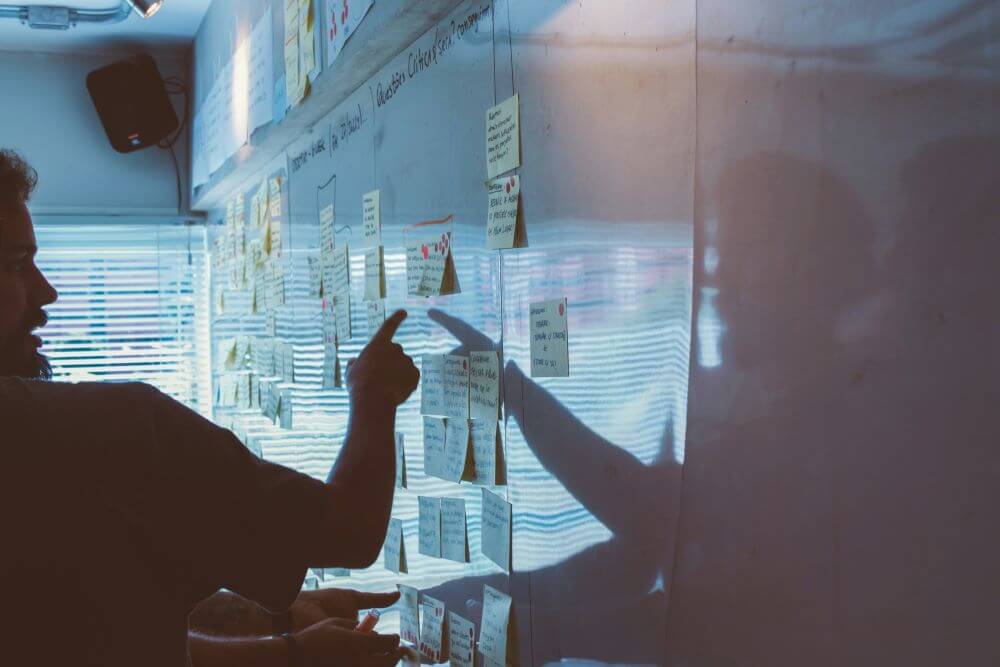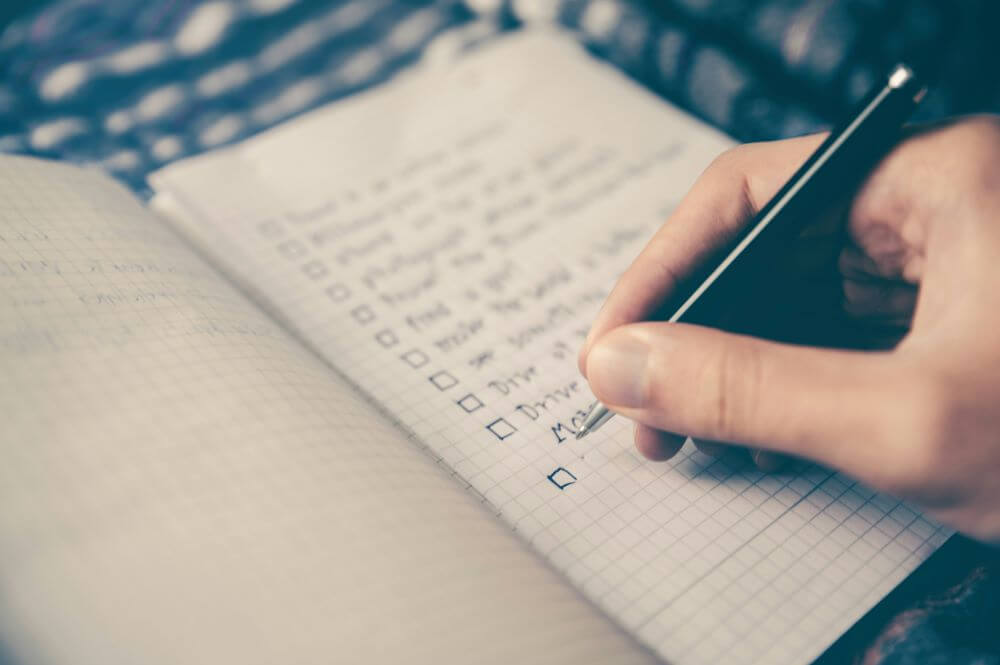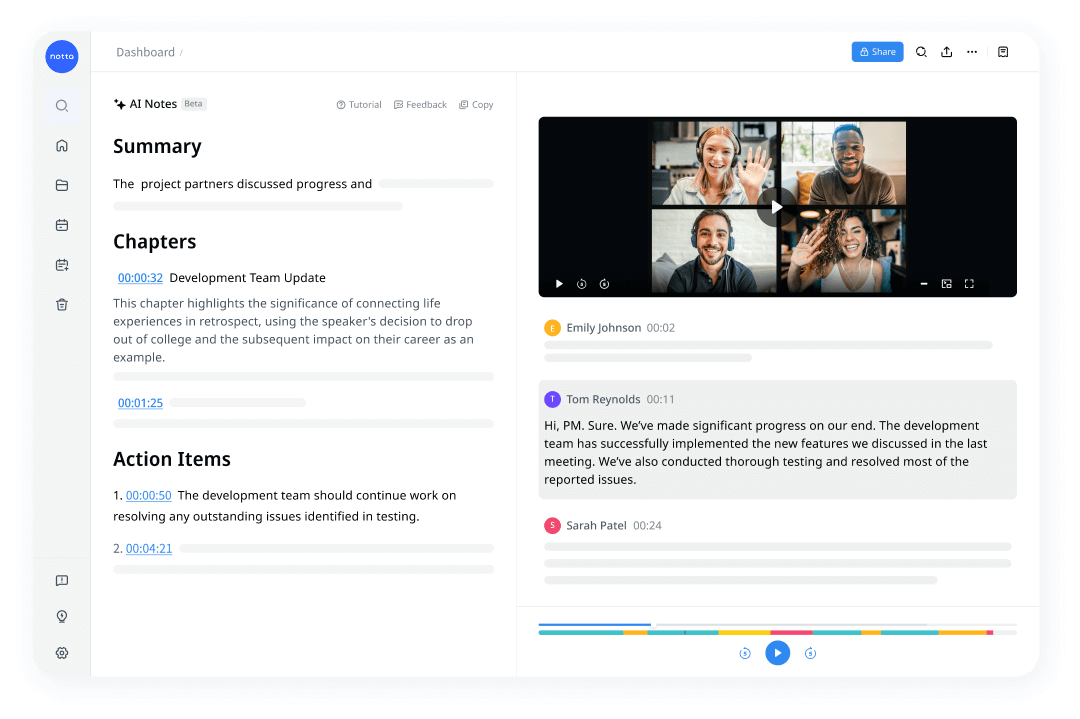Read next: How to Make Weekly Team Meetings More Productive [+Free Agenda]

How to Write an Effective Team Meeting Agenda [+ Templates]
Unlock the power of AI — Notta's meeting assistant records, transcribes and summarizes meeting minutes with one click.
There's nothing more dreadful than receiving a message that you have a meeting in 10 minutes. You can imagine the discussions going off-topic, which leads to ineffective collaboration and a waste of time. Thankfully, a well-crafted team meeting agenda can help you set clear expectations for all the attendees. Think of it as a blueprint of a building — without which everything seems to be directionless and delayed.
I've been creating team meeting agendas for a while now and have experimented with many formats and styles. Here, I'll share how to write an effective team meeting agenda along with the best practices. I'll also reveal a handful of templates and examples that'll help you streamline all your meetings and save valuable time.
What is a team meeting agenda?
A team meeting agenda is a detailed document that provides a meeting overview to help attendees understand the main discussion points and what is expected from them. This helps attendees prepare and gather the key information they might need during the team meeting. It's like a clear roadmap that guides the discussion and keeps everyone focused.

What to include in a meeting agenda?
Whether you're starting a quick huddle with the team or an in-depth strategy session, the team meeting agenda will keep everyone on track. But what should you include in the staff meeting agenda? Well, the core content of each team meeting will vary depending on the meeting's nature and the team's structure.
Here, I'll reveal the common elements that you just can't skip while creating the staff meeting agenda:
Goal or purpose of the meeting: The agenda should start by defining the primary goal or purpose that sets the tone and direction of the meeting. Its ultimate goal is to ensure all the attendees know why the meeting is scheduled in the first place.
Start and end meeting time: Time is valuable, so it's important to specify the start and end times of the meetings. This helps everyone plan out the rest of their day!
Team members included: Next, you'll need to list the names of the team members who need to be a part of the discussion. This step will ensure that no one wastes their time in the meeting if they don't need to be there.
Discussion points: Here comes the most important point: you need to list the key topics you plan to cover. It's the backbone of the agenda, which guides the meeting flow and ensures all the important issues are covered.
Team members leading each topic: Each discussion point would need a team leader. When you mention who's going to lead which topic on the agenda, it helps them prepare for the conversation beforehand.
Duration for each talking point: You won't be spending the entire meeting time on one point. Hence, it's a wise idea to allocate time slots for different topics to offer a balanced discussion across all the items.
Links to necessary resources: Often, many people miss adding resources to the agenda. When you provide the links to necessary resources, it ensures everyone comes prepared for the meeting.
Any questions or notes: There's a high chance that someone will have a question that they would like to discuss in the meeting. Providing some space at the end of the agenda will transform it into a living document to which everyone can contribute.

How to write an effective team meeting agenda?
Your team meeting agenda should be clear, well-planned, and straightforward. Writing an effective agenda is both an art and a science. Here, I'll reveal how to make an agenda for a meeting that perfectly balances structure and flexibility.
Step 1: Define the purpose
Whenever I think of scheduling a meeting, the first question I ask myself is: could this be a text or email? If yes, I immediately craft an email and click send. This helps me cut half of my meetings and save valuable time.
If you decide that the team meeting is necessary, create a clear and concise line that defines the purpose of the meeting. For example, you need to understand whether it is decision-making, team-building, or brainstorming sessions. Remember, this goal will act as the foundation for the rest of your team meeting agenda.
Step 2: List and prioritize topics
Next, it's time to list all the topics that you're planning to discuss in the meeting. You need to make a list and order the team meeting agenda items by significance and importance. The high-priority topics should be listed at the top because sometimes you might not be able to get through everything.
Step 3: Allocate time to discuss each topic
There's no doubt that effective meetings are engaging and involve everyone. So, you must assign clear roles for each agenda item to attendees with similar expertise and responsibilities. You must set aside specific times for each item based on its importance and complexity level. You can even add a 10% buffer to the total meeting time for deep or unexpected discussions.
Step 4: Include all necessary documents
The agenda should also include all necessary reports, documents, or any other information that attendees must review before the meeting. It's a wise idea to share the folder at least 48 hours before the meeting so everyone gets enough time to review materials.
Step 5: Finalize with co-leaders
If you're co-hosting the meeting, it's better to conduct a quick meeting with other leaders. You can assign specific sections to each leader based on their expertise so they can cross-check everything. This will help you create an effective agenda and reduce the workload.

With Notta, you can easily generate meeting minutes, turning spoken content into written records with 98.86% accuracy.
Team meeting agenda templates
Now that I've explained the team meeting agenda and its writing process in detail, here's a template example for staff or team meetings. You can customize the team meeting agenda template depending on your meeting style.
Date: May 06, 2024
Time: 10:30 AM - 12:00 PM
Location: Zoom
Attendee List: Marketing team
Purpose of meeting
Here, you'll need to define the main goal or purpose of the team meeting. For example, what do you want to achieve from the team meeting?
Agenda Topic 1:
11:00 AM - 11:30 AM | Speaker: Marc Jacob
In this section, you need to write a one-line description of the team meeting agenda topic, including what you're planning to achieve and what points need to be covered.
Agenda Topic 2:
11:30 AM - 12:00 PM | Speaker: Julia Ann
Similarly, outline the key topics that the speaker must cover in this time interval.
Additional documents:
Here, you must list all the documents that all the attendees need to check out before the meeting:
[Document 1]
[Document 2]
… and so on.
Any questions or notes
At the end of the meeting agenda, you can leave some space for the attendees where they can add any questions or notes.
Meeting agenda best practices
Using the right staff meeting agenda template is only the first step in hosting an effective meeting. Here, I'll reveal a few best practices to follow when creating a meeting agenda:
1. Have few people in the meeting
It might be tempting to invite all the team members to the meeting. However, it's advised to keep the attendee list short (ideally less than seven members) to improve decision-making abilities in the meeting.
2. Use AI to transcribe meeting
AI meeting assistants and note-takers like Notta can take things a step further by recording and transcribing what's said in the meeting. It has a high accuracy rate of 98.6%, helping to convert spoken words into text accurately.

3. Share summaries with attendees
Not everyone wants to watch the lengthy video or read the entire transcript. Instead, they need to go through the transcript summary. Notta’s AI summary feature can help you pull out key takeaways and produce a list of action items. You can also share the summaries with the team members with a click.
4. Include icebreakers
If you're hosting a virtual meeting, consider adding some time for icebreakers. This will help everyone feel more connected and build a strong working relationship.
Key takeaways
A thoughtful team meeting agenda can reduce the chances of delayed discussions. It involves outlining topics that need to be discussed and finding ways to improve collaboration to feel more engaged. If you want to save valuable time and get things done faster (and better), you can use AI transcription and meeting note-taking apps like Notta.
You can use the automation to transcribe the spoken words and summarize lengthy notes immediately after the meeting concludes. With Notta, you can quickly share the transcripts and summaries with the attendees to keep the momentum going.
FAQs
What are the 5 things you would include in a meeting agenda?
The 5 important things you should include in the meeting agenda are the purpose, duration, name of the attendees, discussion points, and links to necessary documents. You must remember that the structure of the team meeting agenda will depend on the core content of the meeting.
How do you structure a team meeting?
The basic structure of a team meeting includes developing agendas, allocating roles and responsibilities to all the attendees, and adhering to the time constraints. However, the meeting structure might vary depending on the type of meeting, such as quarterly reviews, brainstorming sessions, project kick-offs, etc.
What are the four Ps of a meeting agenda?
The 4 Ps of a meeting agenda are purpose, product, process, and people. The agenda should have a clear purpose and everyone should know about the product and people. When you have an effective agenda in place, it helps you improve the overall meeting efficiency.